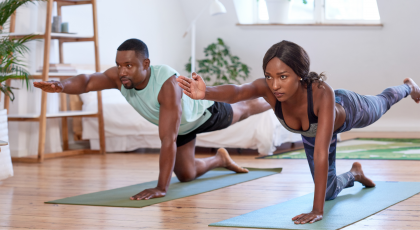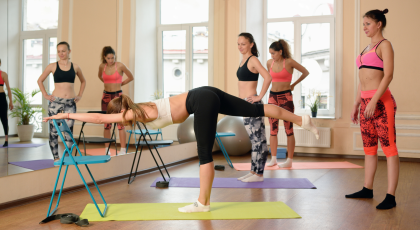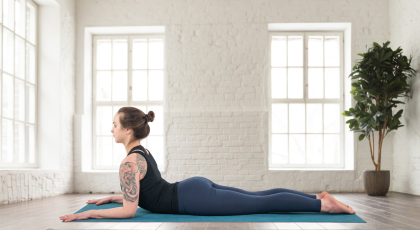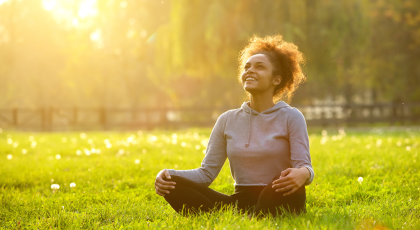View basket (0 items $0.00)
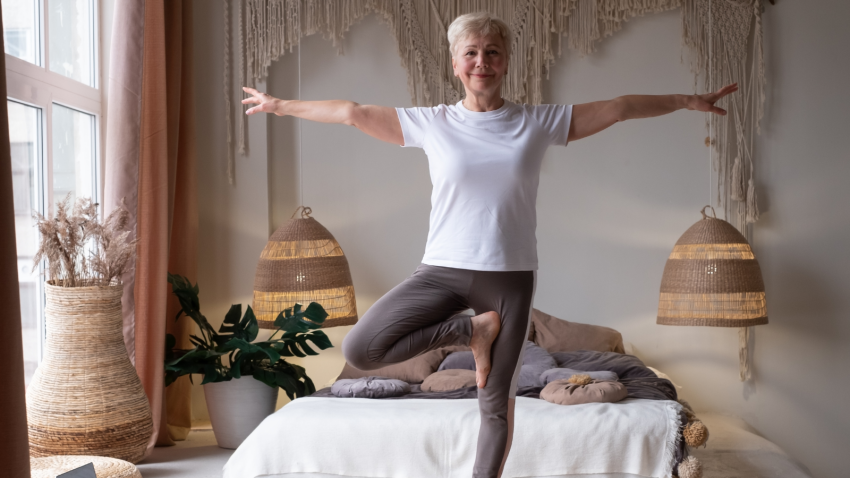
3 Posture Myths You Can Let Go of Now
It’s a cornerstone of Cognitive Behavior Therapy that what you think determines how you feel. How you feel determines what you do, and what you do—no surprises here—determines your results. Your results then reinforce your thoughts, and around it goes again. What does this have to do with posture in general and “spinefulness” in particular?
Most people I meet believe they have bad posture, and they feel guilty about it. How do I know that? Because this is what happens when I meet someone new or catch up with an old acquaintance, and the subject turns to what I teach. At the word “posture,” they snap to attention, chest up and shoulders back. Then they say, “My posture is so bad!” and change the subject.
How Beliefs Train Posture
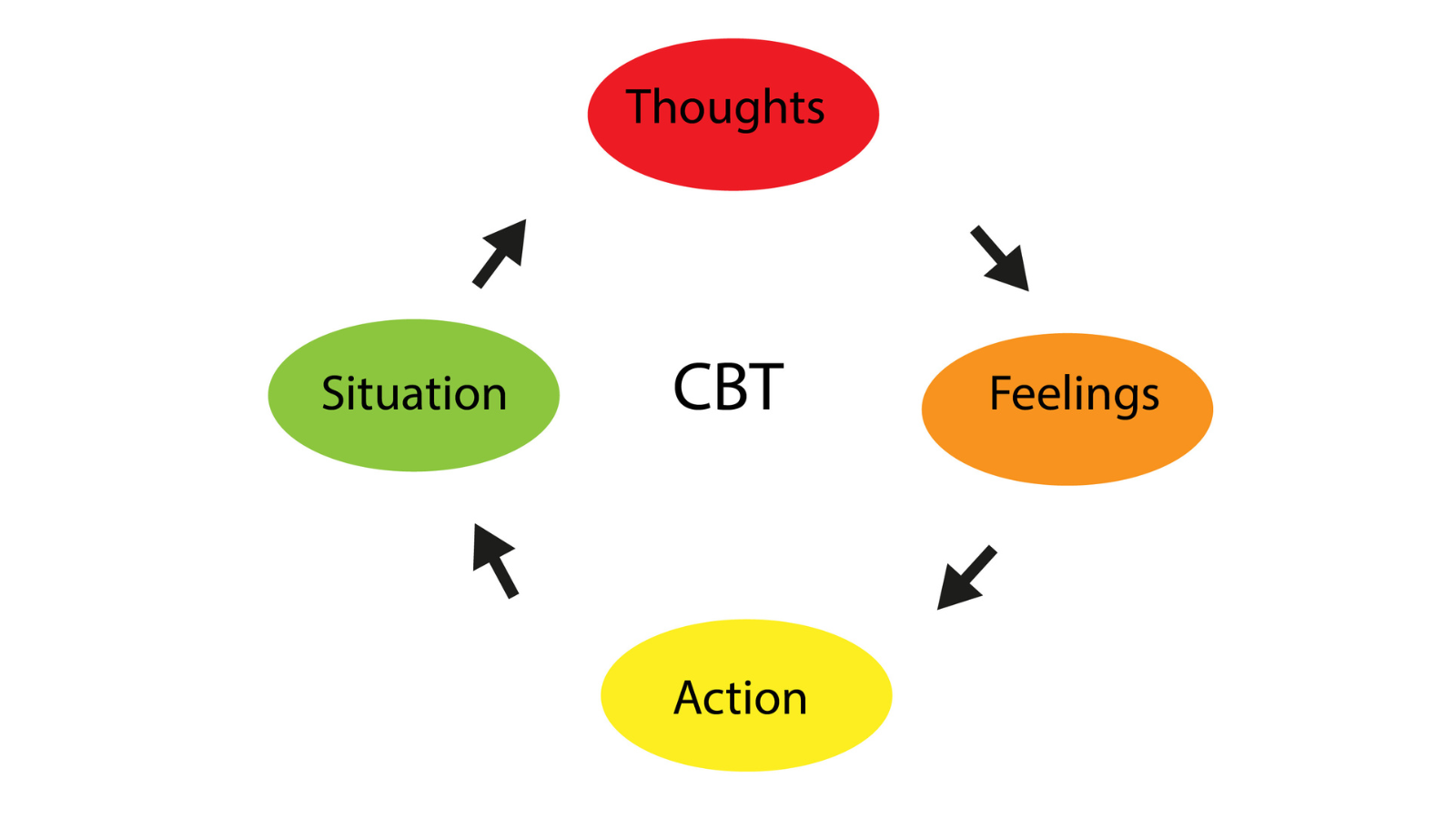 In truth, an unhealthy posture is not your fault. Your culture taught it to you.
In truth, an unhealthy posture is not your fault. Your culture taught it to you.
Forget about girls balancing books on their heads at finishing school or all the “stop slouching” advice from your mom. We absorb what we believe about posture from the stories our culture tells us. The condensed version: we are doomed to slump and sag, to have pain in our joints, and to shuffle into old age bending over our canes.
Left in place, this set of beliefs leads to feeling helpless. Feeling helpless saps our motivation to change, which means we’re stuck exactly where we are. If you’re bound to fail, why would you try?
That’s why the real struggle I see isn’t with bringing change into the body. If you align yourself with gravity and stay aware of what you are doing, change is inevitable. The struggle is to change our beliefs. Once someone believes that easy, comfortable, healthy posture is only a few habit changes away, there’s no stopping them.
So in the spirit of cutting away at the root of the problem, here are three posture myths our culture feeds us, and the empowering facts to replace them with.
3 Posture Myths You Can Let Go Of Now
Posture Myth #1:
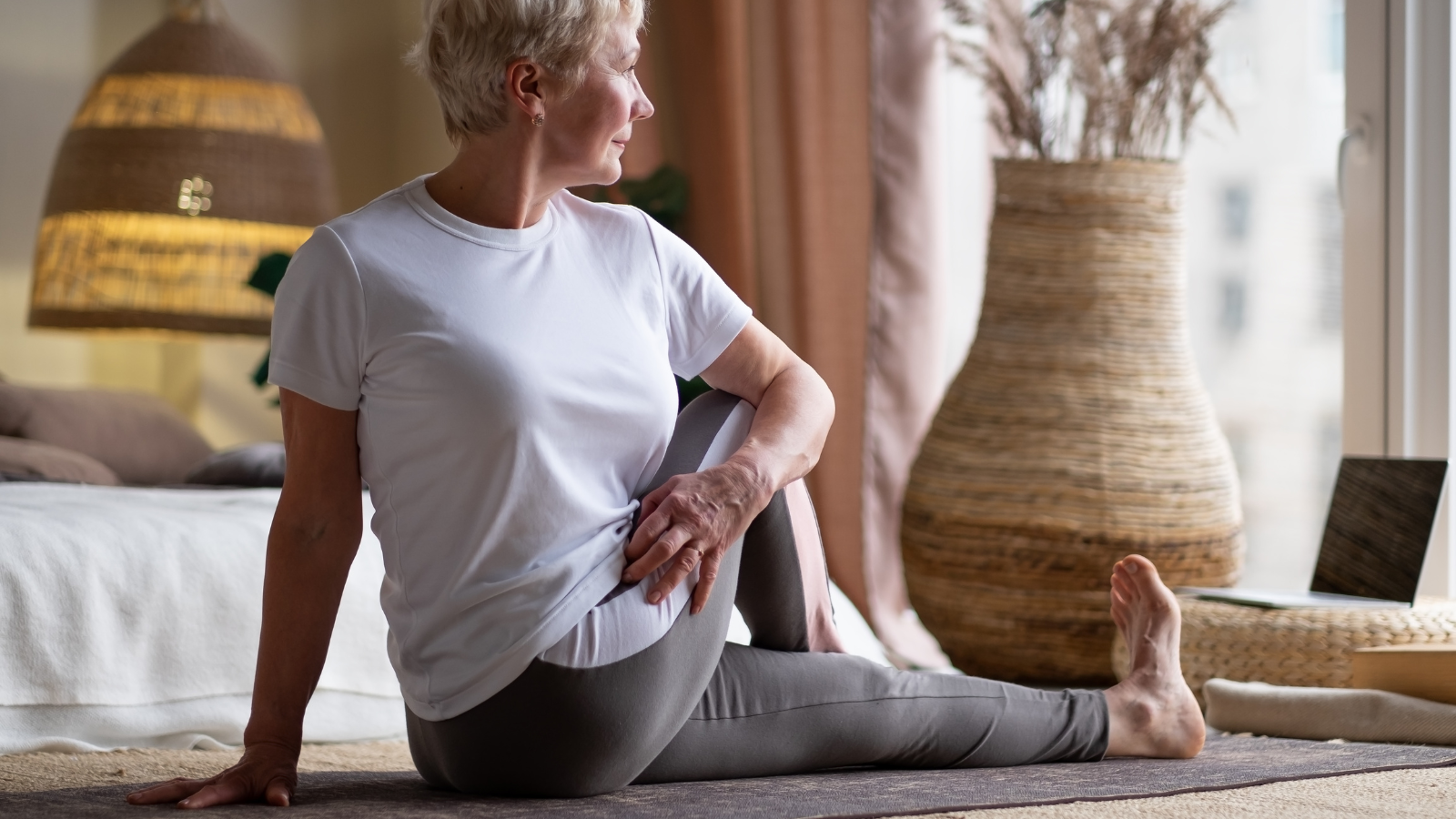 Upright posture is a constant battle against gravity.
Upright posture is a constant battle against gravity.
From Newton and the apple to the way that cup leaped off the counter and smashed on the floor, we know gravity as a relentless downward force. When we’re young and vigorous, the story goes, we can hold ourselves up against it. Gravity gets the upper hand as we age, hence flabby buttocks and double chins. In this belief system, we are locked in a David-and-Goliath struggle, people vs. physics, and it can’t end well.
In fact, you don’t have to hold yourself up.
Just pause and let that sink in for a moment. Really, truly, you don’t have to hold yourself up. You can pull out your unconscious to-do list and cross it off. Doesn’t that feel better?
Gravity isn’t your enemy. It’s not your friend, either. Gravity is a condition of our world. We evolved into human beings by adapting to gravity every step of the way, and without gravity, we couldn’t survive.
Stop Blaming Gravity!
The problem isn’t gravity. The problem is that we no longer align ourselves with gravity. In fact, we act as though we were somehow free of feeling its effects.
We do not look at old buildings and curse the aging effects of gravity. If a bridge or a building fails, we look to the architect or engineer and charge them with blatant disregard for the rules that govern structures.
Human beings are structures, as much as any building. One description of human anatomy is “the bridge that walks.” And just like a bridge, you don’t have to hold yourself up. Gravity will do the holding up for you if you're well designed and you are. Your job is to learn how to align yourself with gravity. Once your bones are aligned, they will do what they evolved to do, which is holding you up. As your bones take on the job of weight-bearing again, your muscles can relax. Over time, you will find a posture that is both erect and effortless.
Posture Myth #2:
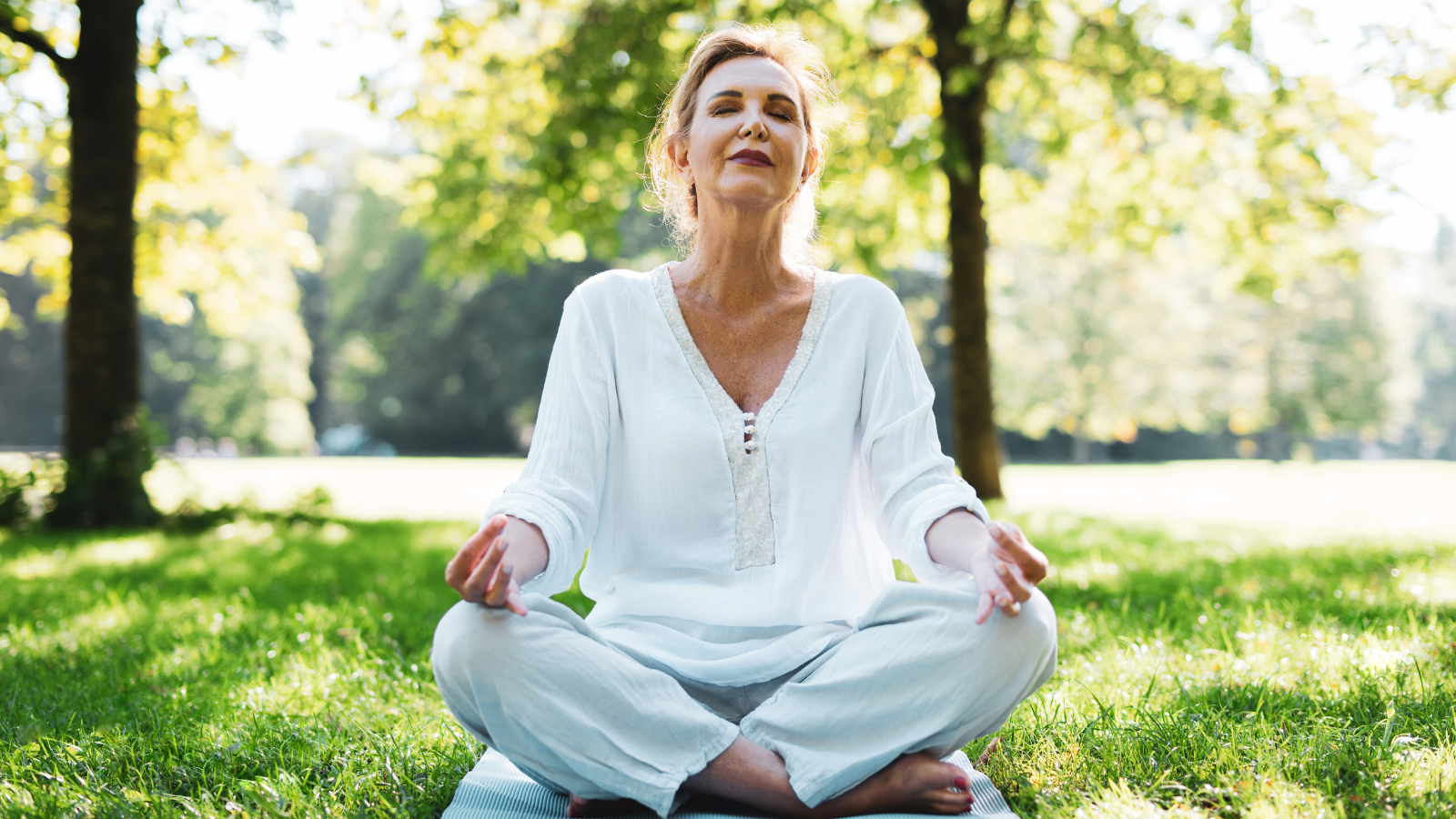 Humanity’s upright posture was a costly investment, and it’s not natural, so of course, we have pain.
Humanity’s upright posture was a costly investment, and it’s not natural, so of course, we have pain.
The reasoning here goes that human beings started out as quadrupeds and then stood up, forever dooming ourselves to lower back pain and wonky knees. The human structure, in other words, is badly designed. And the corollary is that in order to stand up straight, you have to overcome your basic nature, which is to slump. You can only do that with a barrage of energy-consuming actions: chin up, chest up, shoulders back, for three. Good little soldiers and morally upright people are able to hold themselves in a state of constant tension. The rest of us take on this rigid posture for as long as we can and then go back to slumping.
In fact, aligned posture is your birthright.
Human beings didn’t climb out of trees as quadrupeds and then stand up. They climbed into trees as quadrupeds, stayed there for hundreds of thousands of years, and gradually evolved into climbing apes with long arms and legs. Think of lemurs and their upright locomotion. When we finally came out of the trees and started standing, we were already well on our way to upright posture. We also have physical adaptations for standing. They include wedge-shaped discs for our three lowest vertebrae to allow for a lumbar arch.
Aligning Your Bones Improves Posture
It isn’t standing up that gives us back pain. It’s standing badly, with our bones out of alignment. Instead of transferring through our bones and into the ground, our weight slams into our hips and lower backs.
Healthy toddlers the world over are perfectly aligned with gravity. Otherwise, they wouldn’t be able to balance their outsized heads. Children in industrialized societies lose this posture when they start to imitate the adults around them. Children in traditional cultures imitate the people around them and never lose their alignment. And in these societies, back pain is extremely rare.
Truth is, we don’t have to learn healthy alignment. We have to relearn it. This takes information, awareness, and willpower, but it isn’t an artificial process you impose on your body. It’s a return to an earlier state. And there’s no need to pretend you’re a soldier.
Posture Myth #3:
 Unhealthy posture is genetic.
Unhealthy posture is genetic.
“No one in my family has a shapely butt, ergo, lack of butt muscles is a genetic predisposition.”
“Everyone in my family gets hunched over when they’re older, so my rounded upper back is something I inherited.”
And, of course: “Our family is all tight in the hamstrings,” and “we all get bunions.”
The word “genetic” as we use it here, means “something I’ve defined as beyond my control.”
In fact, posture is cultural.
What look like genetic patterns in families are most often learned behaviors. Your mother, aunts, and older sisters all have rounded upper backs? That wasn’t pre-ordained.
Check back a few paragraphs. All healthy babies worldwide are aligned with gravity. Children who grow up in societies in which erect, balanced posture is the norm never lose it. Children in industrialized societies are in balance until they start to imitate their parents.
Posture is Cultural
 We carry “family postures” down through generations because human beings are social animals. There is nothing more important for survival than fitting in with our group. As adults, we do this on a minute scale, as in the postural echoing that occurs when two people mimic each other’s posture while having a cup of coffee.
We carry “family postures” down through generations because human beings are social animals. There is nothing more important for survival than fitting in with our group. As adults, we do this on a minute scale, as in the postural echoing that occurs when two people mimic each other’s posture while having a cup of coffee.
As children, we unconsciously shape our posture to resemble the people who surround us. Later on, we also imitate the media images we see: a constant stream of slouching models, Instagram yogis with buttocks tucked and chests skyward, and macho actors with spread legs, locked knees, and pelvis pushed forward. Even emojis walk with a backward lean.
I was told for years that my rounded upper back was genetic, and as I looked around at the women in my family, I had no reason to doubt it. In two years of Spinefulness—a method I learned from Jean Couch—starting at 68 years old, I straightened my upper back. It continues to improve.
Here’s something true about posture: all over the world, there are people who live with long straight spines well into old age. In these cultures, back pain is rare to non-existent.
The one thing they have in common is a natural and relaxed posture based on the pelvis releasing forward into its ideal anatomical position. Everything else flows from that.
Change Is Always Possible
Here’s another true thing about posture: you can change no matter what your age or family looks like. With one crucial insight and some gentle awareness, you can learn to live in your body in a way that will reduce or remove pain in all your joints. And as a bonus, you’ll have more energy and be more relaxed.
Reprinted with permission from Eve Johnson/Spinefulness.
Eve Johnson taught Iyengar Yoga for 18 years before being introduced to Spinefulness in 2016. Convinced by the logic, clarity, and effectiveness of Spinefulness alignment, she took the teacher training course and was certified in July 2018. Eve teaches Spineful Yoga over Zoom and offers an online Spinefulness Foundations course. For course information, go to http://spinefulness.ca.
Featured Courses
